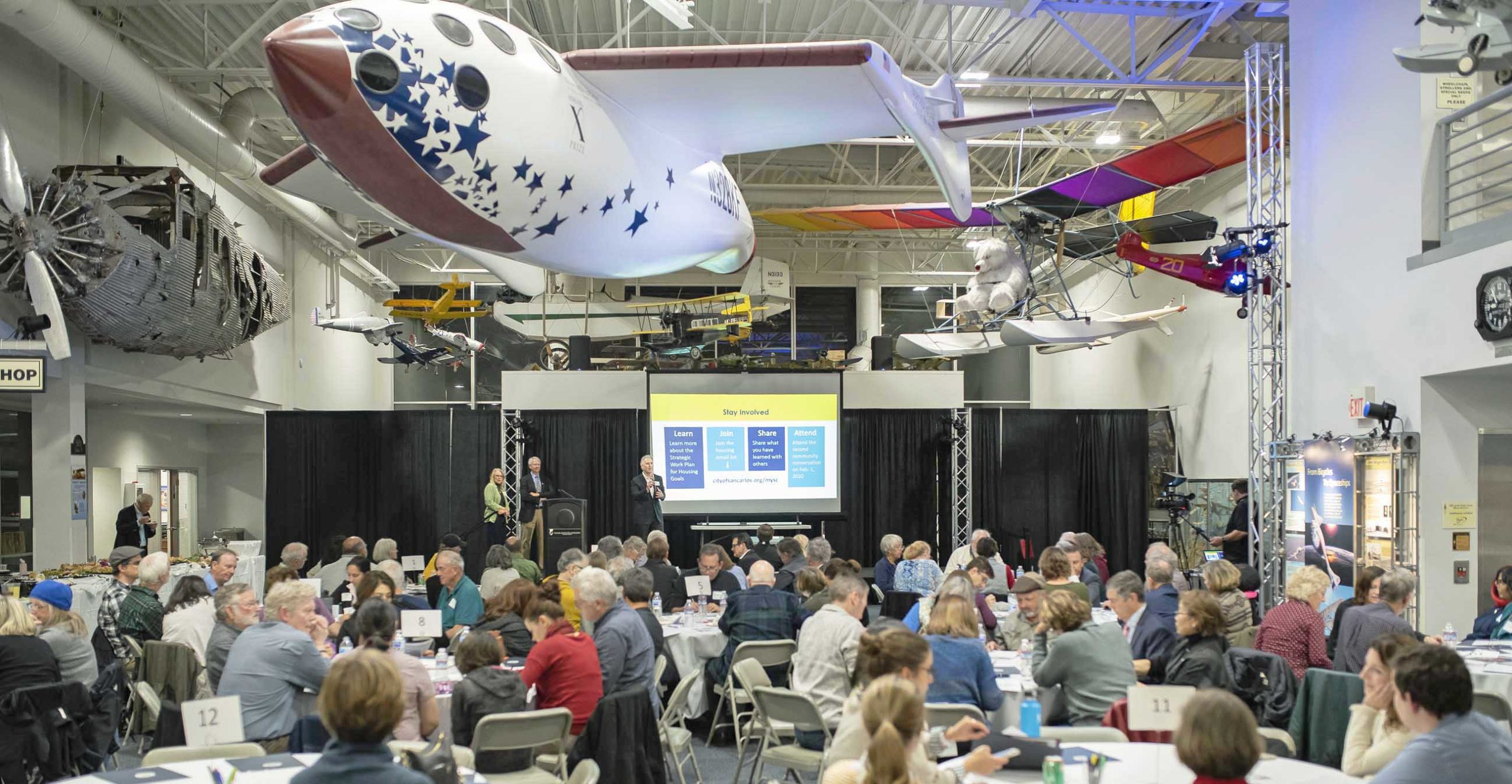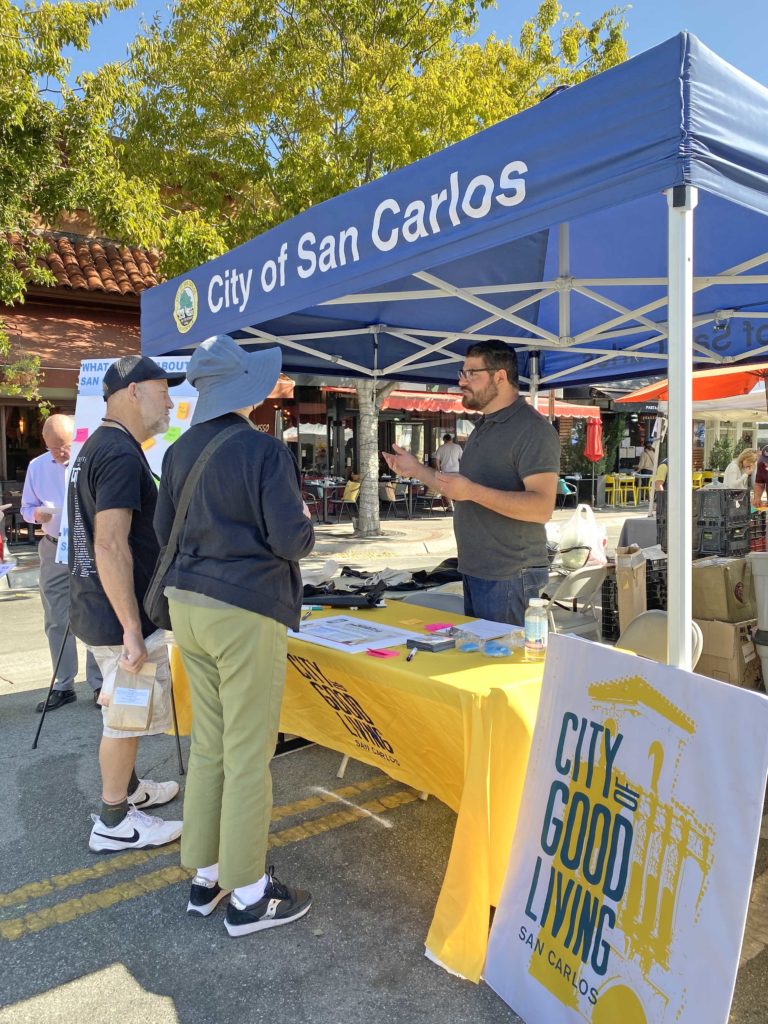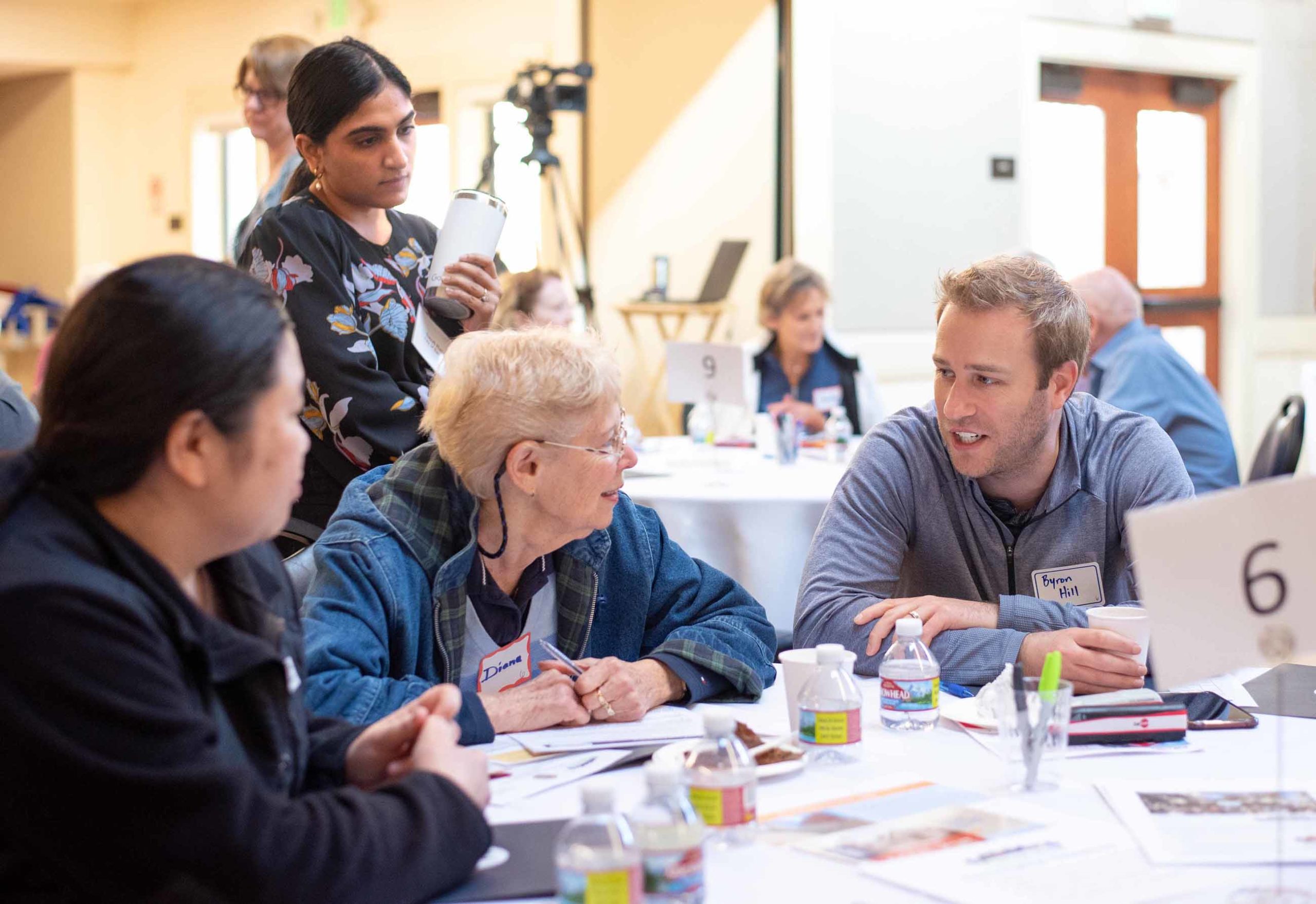By Sajuti Rahman Haque, associate editor, June 29, 2020
VIRTUAL MEETINGS HAVE THEIR BENEFITS. They are open and welcoming to people who otherwise wouldn’t or couldn’t attend public meetings and hearings. But certain things accomplished in large, in-person, physically present public meetings can’t be done virtually.
Welcome Home, San Carlos
On February 1, 2020, the City of San Carlos hosted Welcome Home, San Carlos, one of the city’s last, large, in-person community engagement meetings before the Covid-19 pandemic disallowed them. Welcome Home, San Carlos, with the purpose of helping our community talk more constructively about the shared challenge of housing, was a joint effort between the City and Home for All, a collaborative funded by San Mateo County. Our objective was to understand the housing and transportation priorities, concerns, and values of those who lived and worked in San Carlos.
The initiative, launched in Fall 2019, comprised on-the-street interviews, popup events, and two community conversations. On November 7, 2019, about 100 community members, City Council members, and staff gathered at the Hiller Aviation Museum for the first meeting, which yielded constructive discussions about short and long term housing goals.
The second and last of the large engagement meetings took place on Saturday, February 1, at the San Carlos Adult Community Center. Fifty-five attended.

The significance of an in-person format at a large meeting
Home for All conducted similar community engagement meetings in other participating cities in San Mateo County, including Burlingame, Half Moon Bay, Portola Valley, Redwood City, Brisbane, Pacifica, and San Mateo. The community engagement meeting design works best with physical attendance because —
It draws out different views and ensures they won’t be stifled. People who walk into the meeting with a partner or family members are asked to sit at different tables to ensure that individuals won’t hold back during the moderated table conversations among residents. That would be hard to ask for or accomplish in a virtual format.
It shows the diversity of those attending. The head facilitator “breaks the ice” through interactive exercises that require raising hands or standing to illustrate the diversity of those attending. For instance, one activity required participants to raise their hands if they lived in San Carlos for less than 5 years, 10 years or more, 20 years, 30 years, or more than 50 years.
It focuses on community–level concerns and perspectives. City staff and elected officials were present only as active listeners. They walked around the room and listened to the conversations without interrupting.
It ensures representation from diverse groups and from all parts of the community. To ensure all parts of the community could participate, our outreach events in the run-up to the large community meetings, included pop-ups — at which we gave prizes for filling out questionnaires — and micro-meetings with groups of no more than 10 stakeholders. From the Farmers Market to canvassing downtown, we were able to reach a wide array of community members.

This type of extensive community engagement model with multiple stakeholders simply works better with in-person meetings, and we were fortunate to complete the process before the Covid-19 restrictions. The major concerns and issues raised in the meetings revolved around
- increasing affordable housing;
- a desire for more efficient public transit;
- prioritizing pedestrian and bicycle pathways;
- preserving our small town feel while accommodating more housing;
- and understanding how state housing laws impact the city.
We hoped that the in-person conversation series and outreach events would increase community participation, ensure that all voices were heard, and inform all participants about their various hopes for the community’s future. The “physically present” approach was crucial to creating an inclusive environment where people could talk and listen to each other as they identified key priorities to guide future policies for and actions on housing.

The future of community engagement
As cities begin to reopen in line with the easing of Covid-19 restrictions, municipalities are being forced to consider how best to continue providing basic services and govern efficiently while keeping their staff and public safe. Petra Hurtado, PhD, writing for the American Planning Association (APA) on April 8, identified some important questions: how can planners conduct public meetings during times of recommended distancing, and to what extent can an online meeting replace the in-person experience and fulfill legal, procedural, and ethical requirements?
Most cities are now conducting virtual city council and planning commission meetings via video conferences or telecommunications. Sarah Holder writing for Bloomberg CityLab on May 5, quipped that the new era of local governance via webcam “marries the tedium of a regular city council meeting with technical glitches and occasional on-screen drama.” Yet, despite the technical difficulties we have all experienced, public agencies have climbed aboard the virtual meeting train.
One of the still unfolding benefits of virtual meetings is an increase in public participation in the business of government, especially among those who have found it difficult to attend meetings in person. People now have the comfort of listening to or calling in from where ever they are, without having to set aside an entire evening to travel to and sit in a public hall to participate in local government.
Although virtual meetings and hearings are proving adequate for city councils and planning commissions, we believe focused community engagement meetings, such as Welcome Home, San Carlos, work better in person. In-person meetings can set an informal tone where participants can feel comfortable and spontaneous without worrying about being “on camera.” Conversely, virtual meetings limit interactive activities.
That said, the Home for All team has been exploring alternative approaches to community engagement through virtual sessions and hybrid models that use Zoom in both large and small sessions. Although these virtual models have gone well, there is as yet no satisfactory replacement for certain kinds of in-person, physically present communication. Our community engagement strategies, platforms, and venues must be flexible over the coming months and years if we hope to encourage broad community participation in governmental planning and decision-making.
I would like to give a shout out to the City of San Carlos’ Community Development Department, City Manager’s Office, Home for All, Peninsula Conflict Resolution Center, and Common Knowledge for making Welcome Home, San Carlos a successful community engagement initiative.

